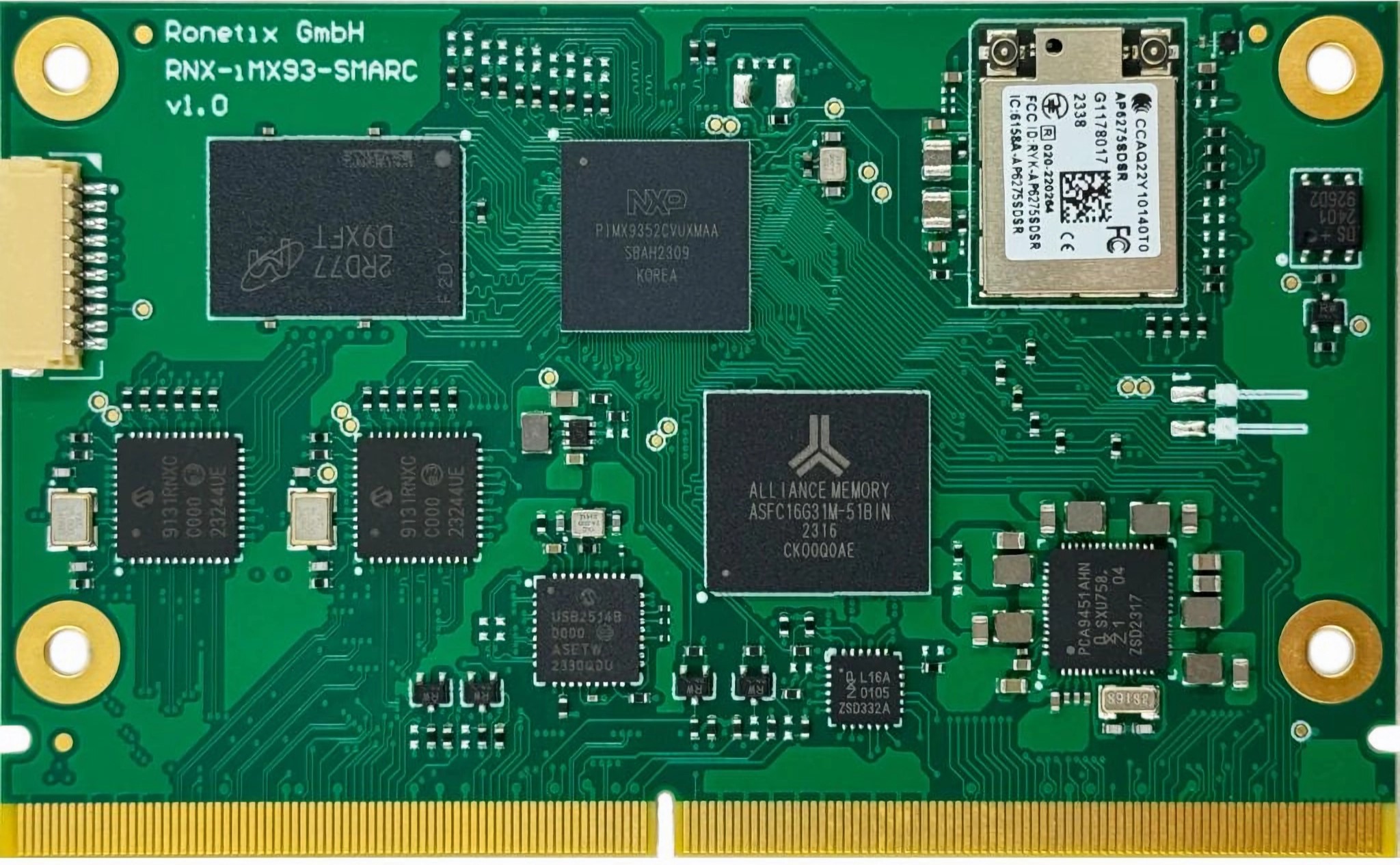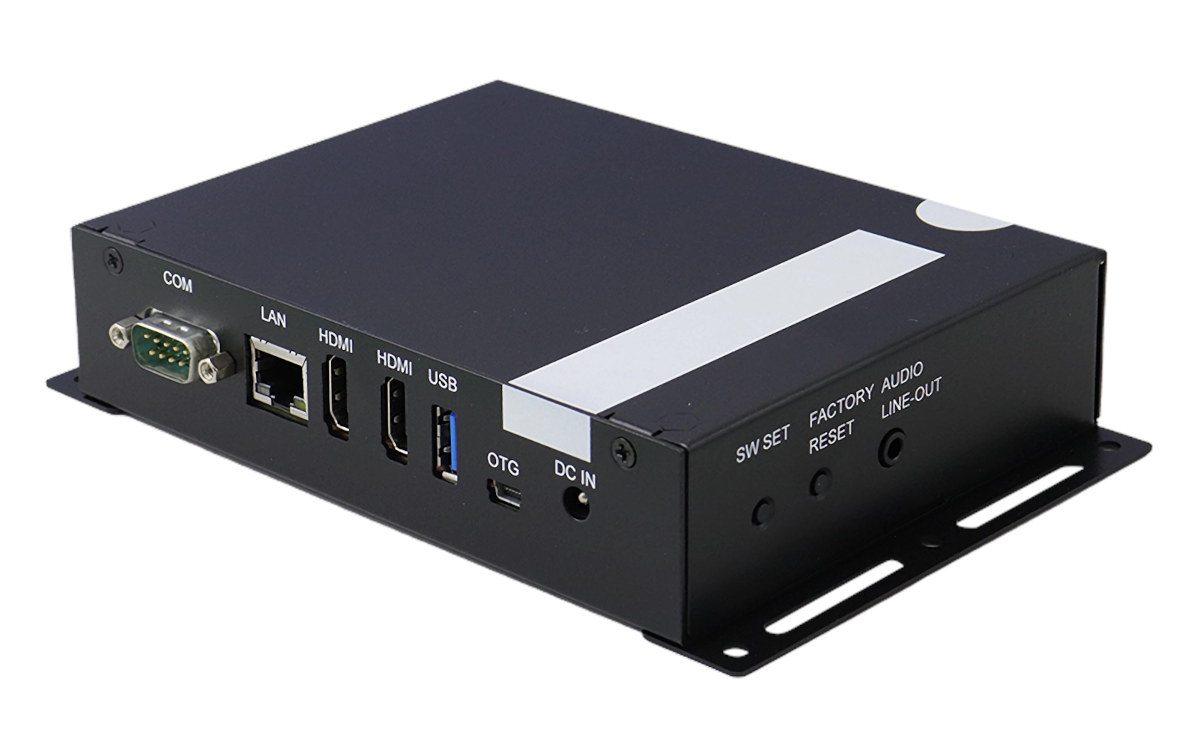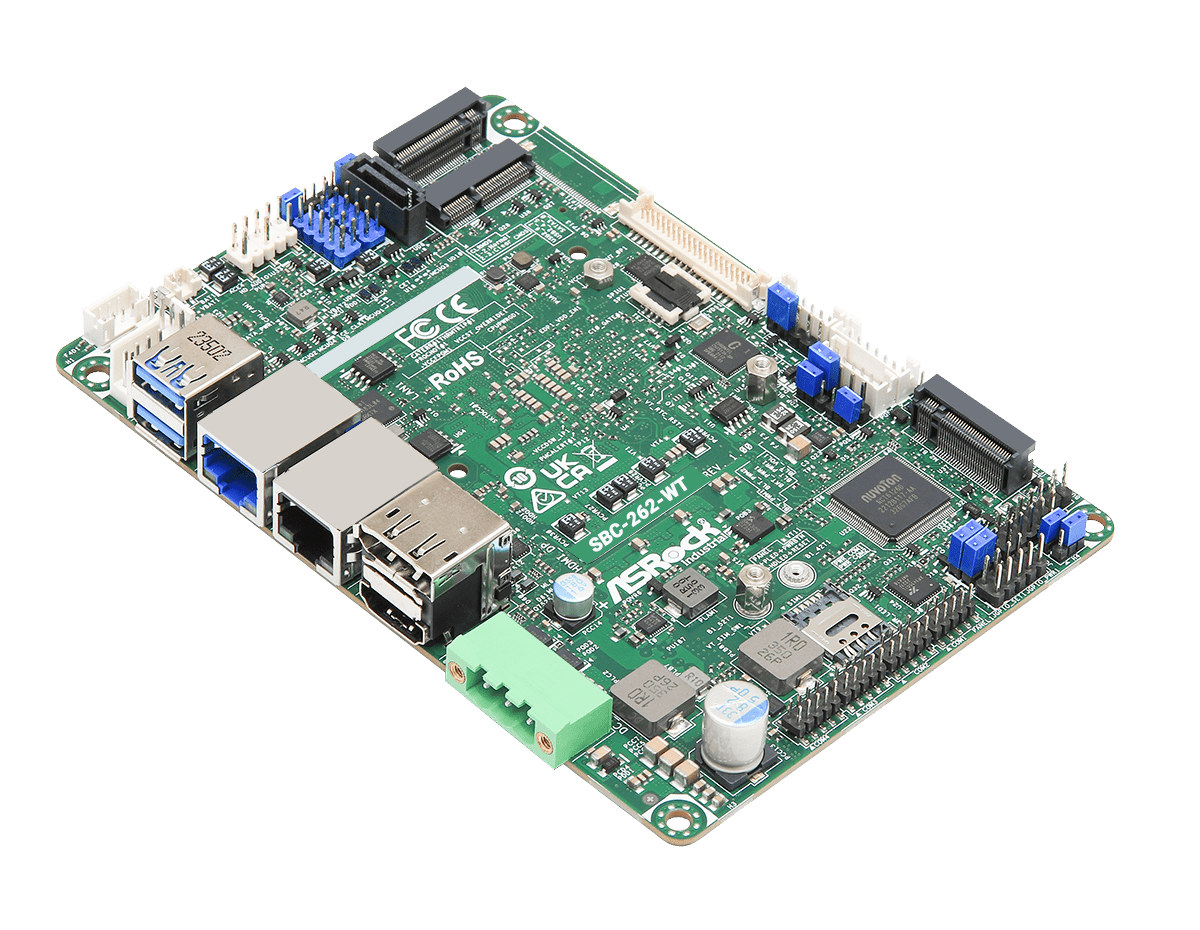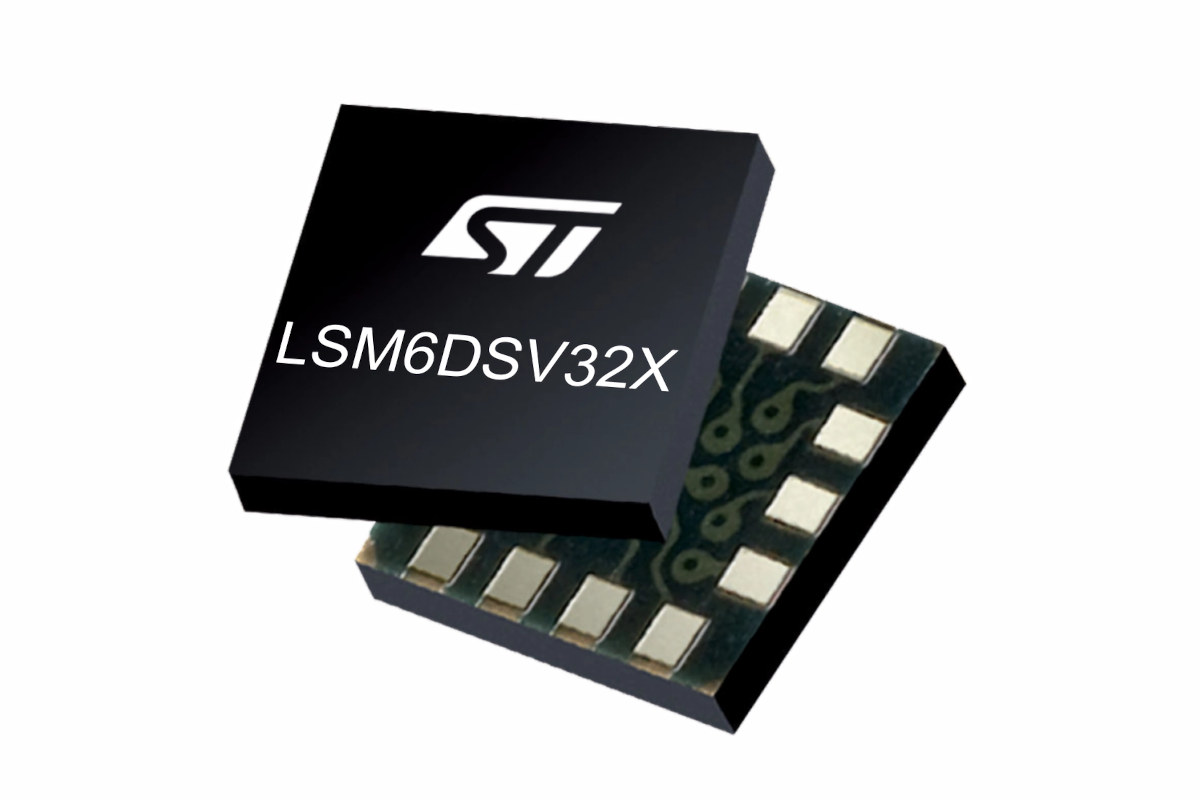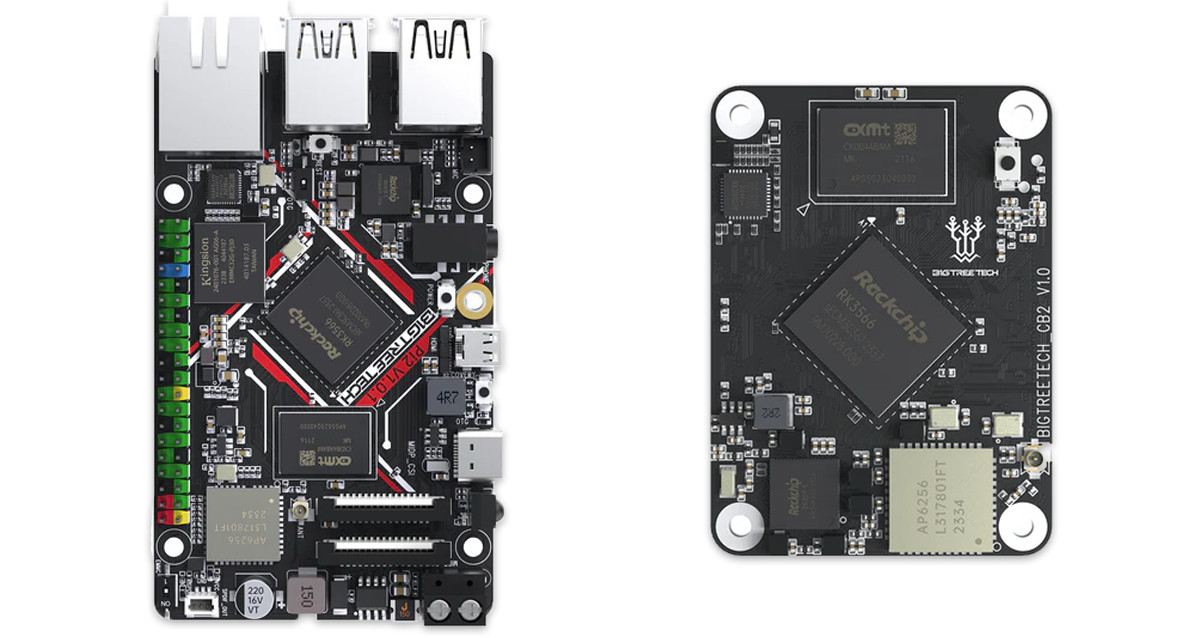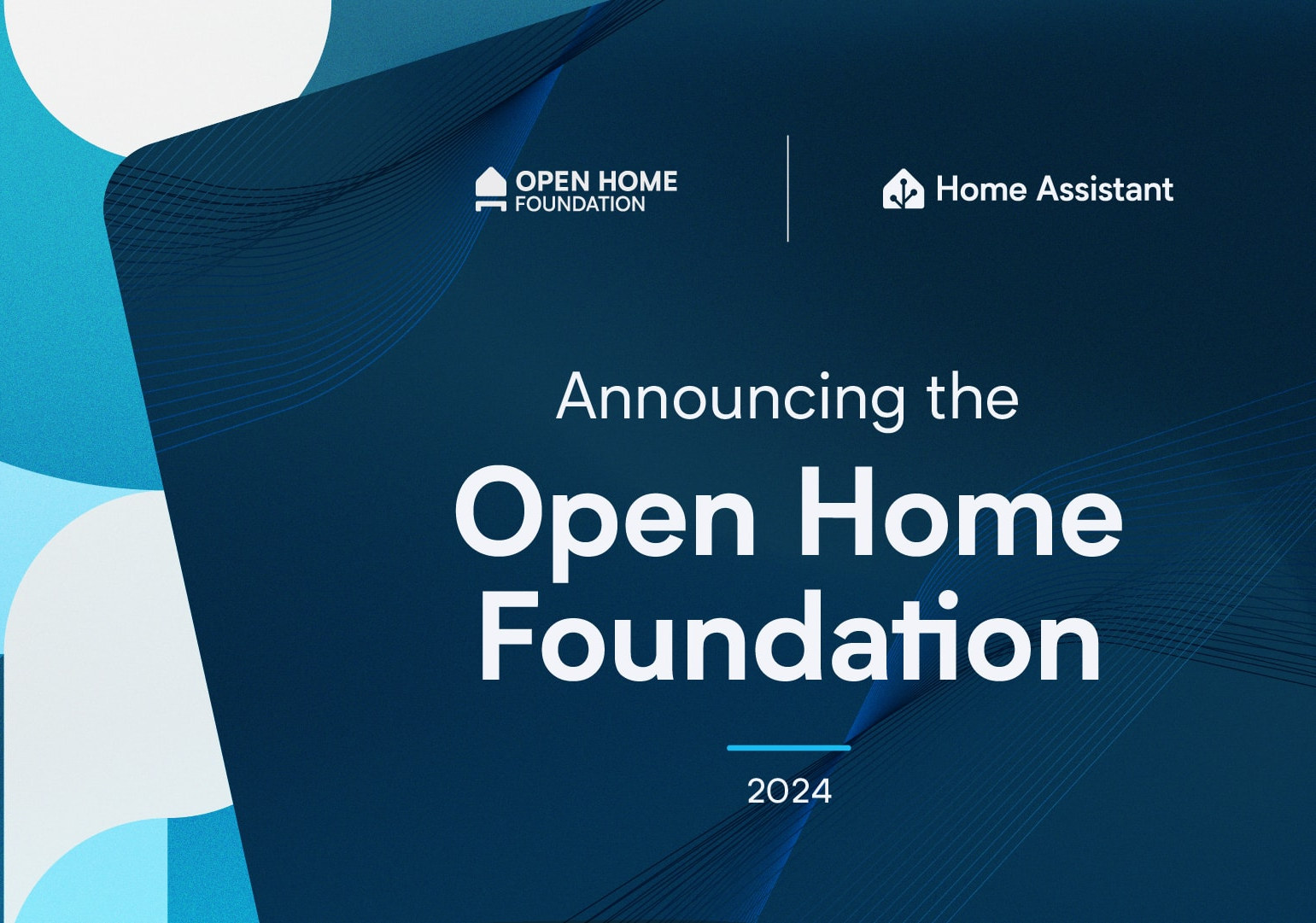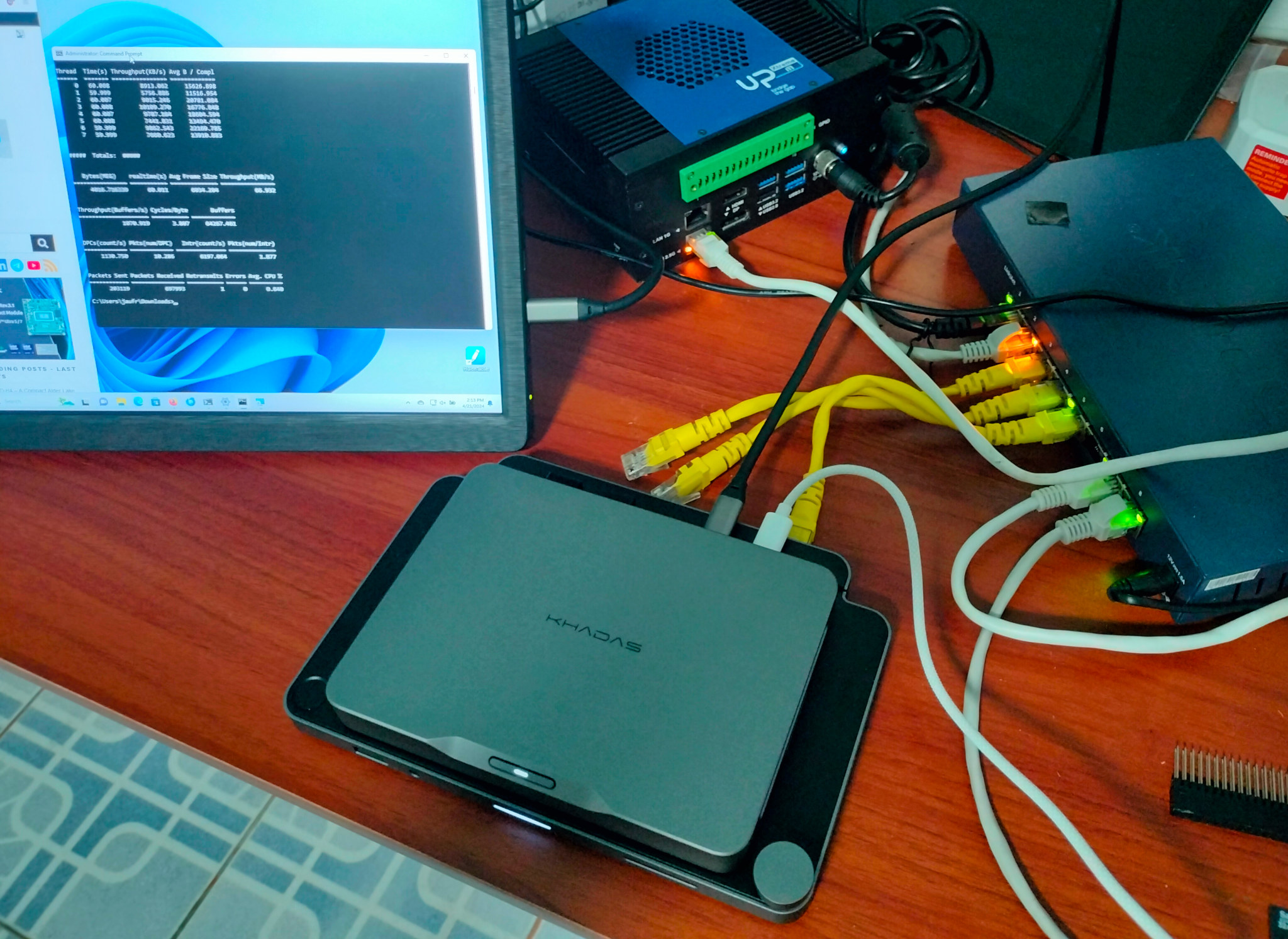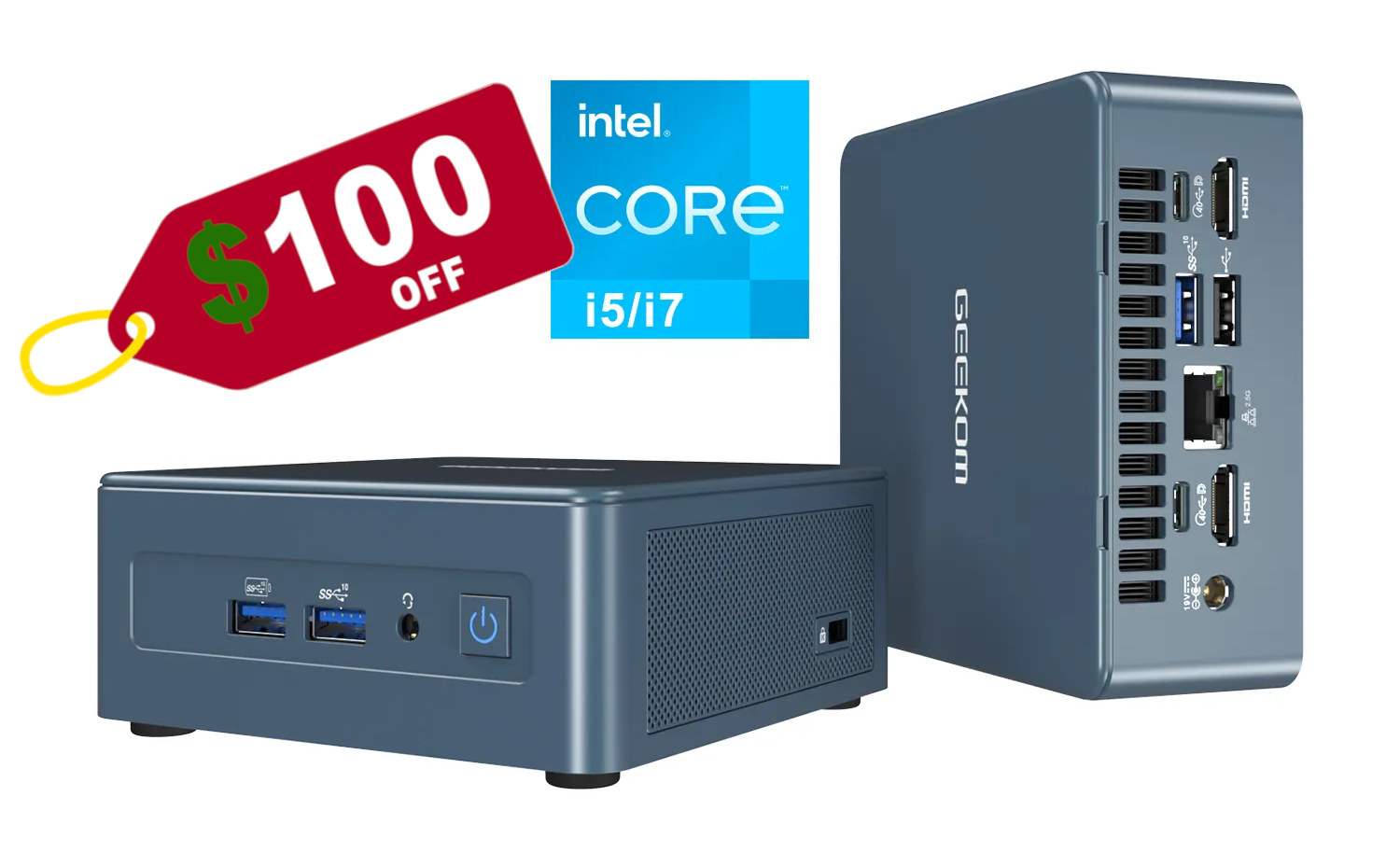Austrian embedded equipment manufacturer, Ronetix, has released two i.MX93 system-on-modules (SoMs): the RNX-iMX93-OSM that follows the Open Standard Module (OSM) form factor, and the RNX-iMX93-SMARC compliant with the SMARC 2.1 (smart mobility architecture) standard. Ronetix i.MX93 SoMs are powered by the NXP i.MX93 processor featuring a 64-bit dual-core Arm Cortex-A55 application processor running at 1.7GHz and a Cortex-M33 core running at 250MHz for low-latency and real-time tasks. The SoC supports up to 2GB LPDDR4 RAM and 512GB eMMC storage, and the integrated Arm Ethos-U65 microNPU offers up to 0.5 TOPS of computing power for machine vision applications and intelligent energy management (IEM). Applicable for industrial automation and IoT, the SoMs also feature two CAN and Ethernet interfaces to aid high-speed data transfer. Other hardware featuring the i.MX93 that we have covered recently include the ADLINK OSM-IMX93, MaaXBoard OSM93, and Ka-Ro Electronics’ QS93. The RNX-iMX93-SMARC system-on-module comes in 82 x 50mm […]
IBASE ISR500 fanless Edge AI computer and digital signage player features MediaTek Genio 510 or 700 SoC
IBASE Technology ISR500 is a fanless digital signage player and Edge AI computer powered by either a MediaTek Genio 510 hexa-core Cortex-A78/A55 processor or Genio 720 octa-core Cortex-A78/A55 SoC with a real-time AI performance up to 3.2 TOPS. The system ships with 4GB RAM and 64GB eMMC flash, features two HDMI video outputs, a gigabit Ethernet port, a few USB ports, a 3.5mm audio jack, a COM port, and an M.2 socket for wireless expansion. IBASE ISR500 specifications: SoC (one or the other) MediaTek Genio 700 (MT8390) Octa-core CPU – Dual-core Cortex-A78 @ 2.2GHz with 256KB L2 cache, hexa-core Cortex-A55 @ 2.0GHz with 128KB L2 cache, shared 2MB L3 cache GPU – Arm Mali-G57 MC3 with support for OpenGL ES 1.1/2.0/3.2, Vulkan 1.0/1.1, OpenCL 2.2 AI accelerator – Tensilica VP6 MediaTek APU 3.0 up to 3.2 TOPS VPU Video Encode – 4Kp30 H.265/H.264 Video Decode – 4Kp75, AV1, VP9, H.265/H.264 […]
ASRock SBC-262M-WT 3.5-inch motherboard features up to Intel Atom X7433RE Amston Lake processor
ASRock Industrial SBC-262M-WT is a 3.5-inch SBC motherboard powered by the latest Intel Atom x7433RE quad-core Amston Lake embedded processor with support for up to 48GB DDR5-4800 memory, triple 4K display outputs, two Ethernet ports, including one with 2.5Gbps Ethernet and Intel TSN/TCC. The motherboard also takes SATA 3.0 and M.2 Key M NVMe storage, offers multiple USB interfaces, supports WiFi and/or 4G LTE or 5G cellular connectivity via M.2 modules and SIM card socket, and provides industrial features such as a wide -40 to 85°C operating temperature range and a wide 9V to 36V DC voltage input range that make it suitable for smart retail, smart cities, and embedded industrial environments. ASRock Industrial SBC-262M-WT 3.5-inch motherboard specifications: SoC – Intel Amston Lake Processors up to Atom X7433RE quad-core processor clocked up to 3.4GHz with Intel UHD Graphics; 9W TDP System Memory – Up to 48GB single-channel DDR5 4800 MHz […]
STMicro LSM6DSV32X Edge AI motion sensor aims to extend battery life in wearables, trackers, and activity monitors
STMicro LSM6DSV32X is a new low-power 6-axis inertial module with the company’s machine-learning core (MLC) with AI algorithms based on decision trees, a 3-axis accelerometer with a full-scale range of 32g, and a 4000 degrees-per-second gyroscope designed to measure intensive movements, impacts, and freefall height (estimation). The features of the sensors enable it to lower the power consumption for functions such as gym-activity recognition to under 6µA, while 3D orientation tracking consumes just 30µA when using STMicro’s Sensor Fusion Low-Power (SFLP) algorithm. It will be found in a range of battery-powered devices such as consumer wearables, asset trackers, and impact and fall alarms for workers or the elderly. STMicro LSM6DSV32X specifications: Triple-channel architecture for UI (user interface), EIS, and OIS data processing Data storage – Smart FIFO up to 4.5 KB Sensors Accelerometer – ±4/±8/±16/±32 g full scale Gyroscope – ±125/±250/±500/±1000/±2000/±4000 dps full scale Embedded temperature sensor Host interfaces SPI, […]
BIGTREETECH Pi 2 SBC and CB2 module for 3D printers now feature Rockchip RK3566 SoC with Gigabit Ethernet
BIGTREETECH recently announced the release of the BIGTREETECH Pi 2 SBC and BIGTREETECH CB2 SoM, both powered by the Rockchip RK3566 SoC. These new modules are direct upgrades from the BIGTREETECH Pi v1.2 and BIGTREETECH CB1, which we covered and reviewed in our previous posts. Specially designed for 3D printers, these new modules have a similar form factor to that of a Raspberry Pi and the RPI CM4 module, and come with a set of upgraded features including support for GbE Ethernet, dual-band WiFi, up to 32GB of LPDDR4 RAM, eMMC storage, HDMI, USB, and more. BIGTREETECH Pi 2 Specifications SoC – Rockchip RK3566 CPU – Quad-core Arm Cortex-A55 processor @ 1.8 GHz GPU – Arm Mali G52-2EE GPU with support for OpenGL ES 1.1/2.0/3.2, Vulkan 1.1, OpenCL 2.0 NPU – 0.8 TOPS AI accelerator VPU – 4Kp60 H.265/H.264/VP9 video decoding, 1080p100f H.265/H.264 video encoding System Memory – 2GB LPDDR4 (Customizable – 1GB/2GB/4GB/8GB) […]
The Open Home Foundation will manage Home Assistant, ESPHome, Zigpy among over 240 open-source Smart Home projects
The Open Home Foundation is a non-profit organization that will manage over 240 Smart Home projects, standards, drivers, and libraries including Home Assistant, ESPHome, Zigpy, Piper, and Improv Wi-Fi with the goal of “fight[ing] for the fundamental principles of privacy, choice, and sustainability for smart homes”. The non-profit was introduced during the “State of the Open Home 2024” (see video embedded at the end of this article) with Nabu Casa – the for-profit company behind Home Assistant – transferring all their projects to the new entity, and the Open Home Foundation will also help with the development of critical external projects such as Z-Wave JS, WLED, Rhasspy, and Zigbee2MQTT. The foundation further explains the goal of teaming multiple projects together in a stronger structure: We’ve done this to create a bulwark against surveillance capitalism, the risk of buyout, and open-source projects becoming abandonware. To an extent, this protection extends even […]
Testing ntttcp as an iperf3 alternative in Windows 11 (and Linux)
ntttcp (Windows NT Test TCP) is a network benchmarking utility similar to iperf3 that works in both Windows and Linux written and recommended by Microsoft over iperf3, so we’ll test the alternative in this mini review. iperf3 is a utility of choice for our reviews of single board computers and mini PCs running either Windows or Linux, but we’ve noticed that while Ethernet (up to 2.5GbE) usually performs just as well in Windows and Linux, WiFi is generally much faster in Ubuntu 22.04 than in Windows 11. So when XDA developers noticed a post by Microsoft saying iperf3 should not be used on Windows 11, it caught my attention. Microsoft explains iperf3 should not be used in Windows for three main reasons: The maintainer of iperf – ESnet (Energy Sciences Network) – says “iperf3 is not officially supported on Windows, but iperf2 is. We recommend you use iperf2. Some people […]
GEEKOM Mini IT12 Mini PC is now available for $349, the lowest price ever (Sponsored)
Following the ongoing $200 off promotion for the powerful GEEKOM A7 mini PC, GEEKOM is now offering another discount for its mid-range Mini IT12 mini PC powered by an Intel Core i5-12450H processor with 16GB RAM and a 512GB M.2 2280 NVMe SSD storage that is now sold for $349 – the lowest price ever – instead of $449, when using the coupon code cnxit12off on GEEKOM US or GEEKOM UK for a $100 discount. While it’s a mid-range mini PC, it still comes with premium features such as two USB4 ports capable of 40 Gbps transfer rate and DisplayPort Alt. mode video output or 2.5GbE and WiFi 6E networking. The GEEKOM Mini IT12 (Core i5-12450H) mini PC also supports up to four 4K displays through HDMI and USB4 ports, additional storage thanks to an M.2 2242 SATA socket and a a 2.5-inch SATA slot, and comes with a total […]


